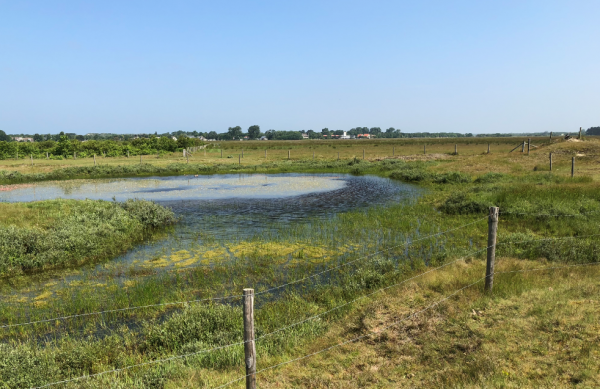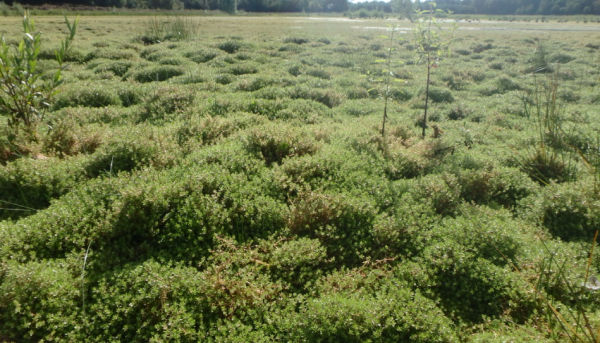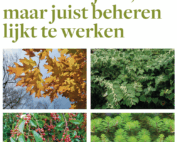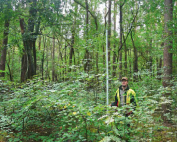


How do you address the dominance of water crassula to in wetlands?
We see it more and more often: wetlands that look more like a field of succulents than a pool or fens. The culprit is the invasive exotic water crassula. A remarkably strong, opportunistic little plant, it proliferates enormously and is successful both on land and in water. Despite frantic efforts by many a nature manager, traditional control proves virtually ineffective. Is there an alternative?
Janneke van der Loop, ecologist at project partner Stichting Bargerveen, deals with water crassula (Crassula helmsii) and specialises in the invasive exotic species. In LIFE Resilias, his is responsible for tackling this species. In an article on Nature Today, she talks about the complexity of tackling this exotic species.
It is clear by now that it is an illusion that you can get rid of everything in every infected location. Control is not only very complex, costly and time-consuming, but often ineffective in the longer term. The need for a method that allows us to better control water crassula in wetlands was therefore great.
Today, this second LIFE Resilias article on water crassula was published. You can download the article 'Water crassula versus native vegetation; from a fragile to resilient system' download here as a PDF.
Click here to see the article on Nature Today view.
Feel free to share this post. Choose your platform here.
How do you address the dominance of water crassula to in wetlands?
We see it more and more often: wetlands that look more like a field of succulents than a pool or fens. The culprit is the invasive exotic water crassula. A remarkably strong, opportunistic little plant, it proliferates enormously and is successful both on land and in water. Despite frantic efforts by many a nature manager, traditional control proves virtually ineffective. Is there an alternative?
Janneke van der Loop, ecologist at project partner Stichting Bargerveen, deals with water crassula (Crassula helmsii) and specialises in the invasive exotic species. In LIFE Resilias, his is responsible for tackling this species. In an article on Nature Today, she talks about the complexity of tackling this exotic species.
It is clear by now that it is an illusion that you can get rid of everything in every infected location. Control is not only very complex, costly and time-consuming, but often ineffective in the longer term. The need for a method that allows us to better control water crassula in wetlands was therefore great.
Today, this second LIFE Resilias article on water crassula was published. You can download the article 'Water crassula versus native vegetation; from a fragile to resilient system' download here as a PDF.
Click here to see the article on Nature Today view.


Feel free to share this post. Choose your platform here.
Latest news
Interview: Managing rather than fighting seems to work
Trade magazine My Nature interviewed Jessica Snoek, the new project leader of LIFE Resilias for the autumn issue of 2025. The article 'New insights argue [...]
Resilias in France
The French government, together with species, biodiversity and invasive species organisations, organises exchanges on invasive species between policymakers and researchers. Introduction by Bart [...]
Publication: Rejuvenation under American bird cherry - a guide for forest managers
To better understand the impact of bird cherry on the rejuvenation of native tree species, the Technical University of Dresden conducted a [...]




